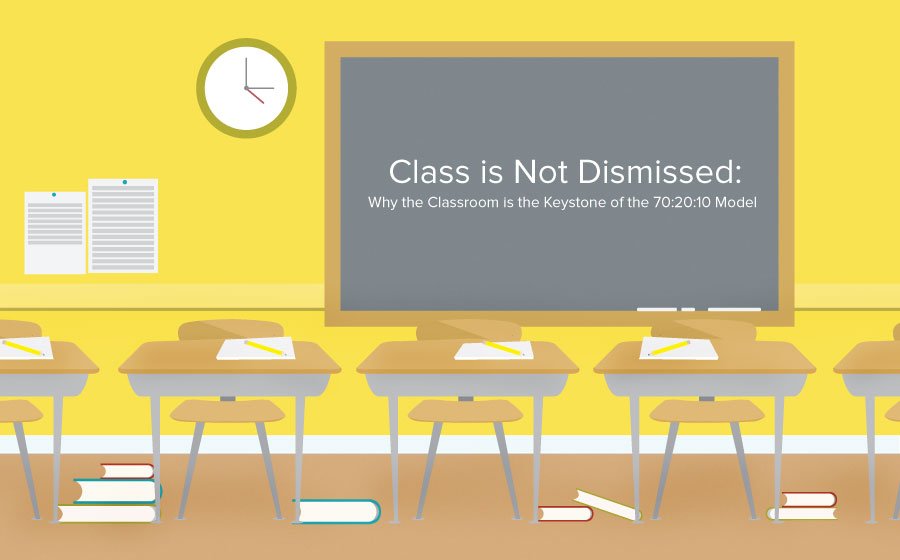School might be out for summer, but that doesn’t mean organizations should ditch the classroom way of life. When most organizations’ training structure revolves around the 70:20:10 gold standard of experiential, social, and formal learning instituted by the Center for Creative Leadership back in the 90’s, it’s important to not get too caught up in the latest delivery methods and eLearning fads.
It’s true that the CLL model encourages organizations to think beyond typical training and promote a blended approach to instruction, but it doesn’t negate the importance of classroom-based learning. By understanding how the classroom plays into even modern training applications, you won’t forget to blend some face-to-face time into your other training strategies.
Using the 70:20:10 Model
A few numbers by the Brandon Hall Group illuminates just how most organizations are using the 70:20:10 rule today. Most notable is the number of businesses implementing the rule, even 20 years after its birth: More than 60 percent of organizations implement it in some way, while 21 percent say that they utilize the 70:20:10 rule formally within their training structure.
The model clearly outlines the idea that the majority of learning should be experiential, with social applications and formal elements coming in a close second and third on the scale of importance. Unfortunately, there seems to be a disconnect between the understanding of the model and the actual application. According to the Brandon Hall Group, organizations don’t always use the learning methods that are the most effective. One of the strategies with the highest rate of usage (over 60 percent) was implementing online reference libraries, for example, but only 36 percent agreed that it was a highly effective strategy.
On the other hand, in-person classrooms are the most widely used training strategy (70 percent), and the one deemed the most highly effective (65 percent). Naturally, the results vary from organization to organization, but in the end, classroom-based training is still one of the most effective ways to teach learners.
Applying a Blended Approach
You don’t need to completely ditch newer strategies in favor of classroom learning. Instead, take a blended approach and combine eLearning efforts with face-to-face training for a higher level of learning. If the 70:20:10 is the gold standard for learning, then classrooms can help fulfill some of those requirements.
When in class, learners can participate in hands-on activities, debates, and exercises, which helps fulfill the high need for experience-based instruction. Classroom learning is also highly social, particularly when learners are encouraged to discuss and participate together. Finally, the 10 percent formal learning requirement is fulfilled when learners stop other distractions and focus in a traditional training setting.
Online libraries, eLearning modules, and microlearning all have their place in the 70:20:10 model, and it’s hard to not get distracted by all the new trends and tools in the eLearning sphere. But when planning training strategy, don’t knock the importance of the classroom. With school back in session, your learners get the best of both worlds.






